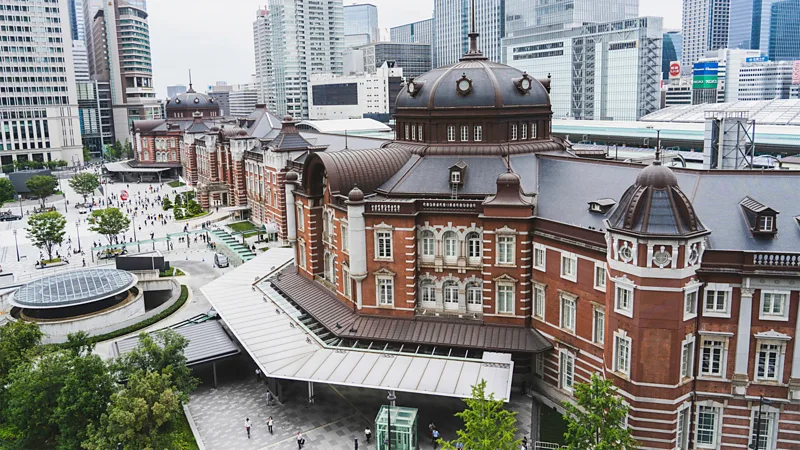The grand age of rail travel left behind magnificent architectural monuments (luxury hotels). Many of these structures served as majestic gateways to cities. They stand as testaments to industrial ambition and Gilded Age elegance. However, as travel patterns shifted, many of these iconic train stations faced decline. Fortunately, a fascinating trend has emerged globally. Developers and architects are embracing adaptive reuse. They are transforming these historic termini into some of the world’s most unique and luxurious hotels. This reinvention preserves the stunning architecture. It simultaneously breathes new life into forgotten urban centers. Consequently, guests can now sleep under soaring, vaulted ceilings.
St. Pancras Renaissance Hotel, London, UK luxury hotels
The story of the St. Pancras Renaissance Hotel is perhaps the most famous example of architectural salvation. It is a triumph of preservation that nearly never happened.
A Victorian Masterpiece Saved
The hotel has originally built in 1873. It has designed by the renowned Victorian architect Sir George Gilbert Scott. The building is famed for its stunning Gothic Revival façade. Its intricate stonework and towering clock tower make it instantly recognizable. However, the Midland Grand Hotel, as it has known, closed in 1935. It spent nearly five decades serving as railway offices. This fell into severe disrepair. It faced a threat of demolition in the 1960s. The structure has saved only by a massive public campaign. Architectural advocates fought relentlessly for its preservation. luxury hotels
The Modern Transformation
Following decades of neglect, the building underwent a meticulous, multi-million-pound restoration. The hotel reopened as the St. Pancras Renaissance Hotel in 2011. The renovation preserved the grand scale of the original design. It features the famous Grand Staircase, whose gilded wrought iron and intricate tile work are breathtaking. The former Booking Office, a vast space with soaring ceilings and ornate chandeliers, is now a magnificent bar and restaurant. The guest experience has seamlessly blended with history. Guests enjoy modern amenities. They have surrounded by the palpable atmosphere of Victorian opulence. The successful revival established a new benchmark for adaptive reuse projects globally.
The Crawford Hotel, Denver, USA luxury hotels
The revival of Denver Union Station stands as a shining example of public-private partnership. The station has transformed into a bustling transportation and lifestyle hub. luxury hotels
A City Landmark Reborn
Denver Union Station first opened in 1881. It served as the primary hub for rail traffic crossing the American West. The station underwent a major redesign in 1914. It adopted the Beaux-Arts style. Its signature feature is the massive, arched windows and the striking “Travelers Rest” sign. By the late 20th century, the station’s role had diminished. It has primarily used for commuter rail. Its grand hall suffered from neglect. The city undertook an ambitious $54 million redevelopment plan in 2012. The goal was to preserve the building while integrating modern retail and hospitality.
Staying in the Great Hall luxury hotels
The Crawford Hotel opened within the station in 2014. The hotel offers 112 uniquely designed rooms. The rooms have spread throughout the historic structure. The guest experience is deliberately varied. Rooms in the former ticketing office feature a modern industrial design. Rooms located in the upper floor’s former sleeper quarters maintain a classic Pullman train carriage feel. The historic Great Hall, or “Denver’s Living Room,” is the central feature. It is now a bustling public space. It includes bars, restaurants, and comfortable seating areas.
Taj Mahal Palace & Tower, Mumbai, India (Contextual Significance) luxury hotels
While not a former train station, the Taj Mahal Palace & Tower shares a similar spirit of grand, historical architectural preservation and revitalization that draws from a historic transportation hub’s significance. It stands across from the Gateway of India. It symbolizes the intersection of travel, history, and luxury in a major port city.
A Symbol of Bombay’s Grandeur luxury hotels
Opened in 1903, the Taj Mahal Palace hotel has commissioned by industrialist Jamsetji Tata. It has built to stand proudly near the Apollo Bunder waterfront. This spot was the gateway for all major arrivals by sea. The hotel became an immediate landmark. It featured stunning Indo-Saracenic architecture. This has celebrated for its central dome and opulent interiors. It served as the de facto welcome point for Maharajas, viceroys, and distinguished travelers arriving by steamer. This location gave it a status similar to that of a primary rail terminus. It was the starting point for luxury journeys across India.
Enduring Resilience
The hotel’s resilience is central to its modern identity. It endured neglect during wartime. It suffered severe damage during the 2008 terrorist attacks. However, it has meticulously restored. Its revival underscored its role as a symbol of Mumbai’s enduring spirit. Staying at the Taj has an experience rooted in history. Guests have surrounded by artifacts and photographs that detail the history of the city’s early 20th-century grandeur. This dedication to historical significance places it firmly in the category of essential luxury heritage travel destinations. luxury hotels
The Principal Madrid Hotel, Madrid, Spain luxury hotels
The Principal Madrid Hotel has housed in a stunning, early 20th-century building. It is located directly on Gran Vía. Its history has tied closely to the city’s main railway terminal. It provided a luxurious resting place for travelers arriving at the nearby Atocha Station. This station serves as a vital hub for Madrid’s high-speed and regional rail networks.
Gran Vía’s Gateway
The building was originally constructed in 1917. It featured the classical architecture characteristic of Madrid’s most iconic thoroughfare. Its proximity to Atocha, the largest railway station in Madrid, made it a destination. It hosted wealthy travelers and businessmen arriving from across Spain and Europe. The hotel was recently renovated. It transformed into a boutique luxury destination. The design emphasizes sophistication and tranquility. It contrasts sharply with the bustle of Gran Vía below.
The Modern Experience
The Principal Madrid excels in blending its historic structure with contemporary luxury. The interior design utilizes dark wood and leather. This evokes the golden age of train travel. The most celebrated feature is the rooftop terrace. It offers panoramic views of the city. It provides a serene escape. Guests can watch the vibrant city life below. They can reflect on the building’s century-long history of hosting international travelers. The hotel retains the spirit of its past. It continues to serve as a luxurious welcome point for those arriving in the Spanish capital by rail. luxury hotels
Preserving History, Defining Luxury
The transformation of historic train stations into luxury hotels is a powerful architectural narrative. It has a trend fueled by nostalgia and necessity. These projects preserve essential elements of urban history. They adapt them for modern, luxury tourism. From the Gothic revival of St. Pancras to the Beaux-Arts grandeur of Denver Union Station, these hotels offer more than just a place to sleep. They offer a journey back in time. They allow guests to connect with the ambitious, romantic age of rail travel. luxury hotels
Read More Articles Click Here. Read Previous Article Click Here.

